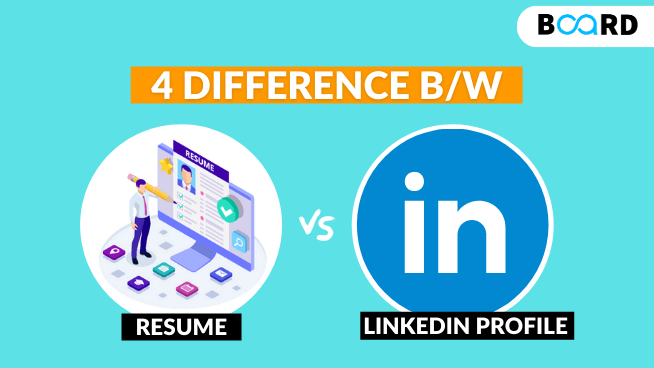Specialized Resume Formats and Advanced Strategies
There is a Difference between your Resume and your LinkedIn profile

You must have developed a practice wherein as soon as you thought of creating a Linkedin profile, you would have copied most of the stuff from your resume (since most of the sections are the same). Most of them do that and don’t realise that a LinkedIn profile serves a very different purpose than a resume. Today, a recruiter has various options to check the candidate’s background. Earlier, a recruiter had a covering letter as a supporting document. Now he can check your LinkedIn, Facebook, or Instagram and know you as well as anyone else. A lot of people assume that a LinkedIn profile is a waste of time, or is an exact online replica of the resume. But, each has its own benefits and one can’t do without one other. Let’s understand the difference between a resume and LinkedIn profile in depth.
1. Purpose
The resume is a document where you market yourself by enlisting your value addition areas along with your skills and capabilities. It is to convey why you’re the best fit for the job the recruiter is hiring for. It doesn’t give you the liberty to express your whys or what's. Resumes are supposed to be very matter-of-fact, brief, and to-the-point. It’s not a place to build your personal narrative. Whereas LinkedIn on the other hand enjoys a more relaxed tone. In your profile, you can provide more details and deeper context for the achievements. With vivid and colorful descriptions, even humor can be incorporated into your tone. Recruiters often gain a deeper look into your personality if you’ve written your LinkedIn profile well.
2. Usage
Resumes are often tailored to every job opening you apply to. Don’t you feel tired sometimes of altering your resume and taking separate printouts each time you’re applying for a different role? But it’s essential because you need to highlight the specific skills required for the job you’re applying to and you need to fine-tune your value add points so that it appeals to the recruiter who’s looking at your resume. And guess what, you don’t need to do the same thing for LinkedIn. The profile can be visited by anyone at any point in time. Hence it wouldn’t make sense to tailor it specifically to one particular audience. Thus, your profile needs to talk about the bigger picture of your value like your life story, your career path, or your biggest achievements.
3. Length
A resume is not more than two-three pages, as per the thumb rule. No recruiter is going to read more than that. Meanwhile, for your LinkedIn profile, there is no limit specified in the length. You can include your project presentations, video links, documents, etc. This really helps in your narrative about your career as you can support it with your work samples as well.
4. Advantage
While your resume highlights your qualifications and work experience in a no-nonsense way, your LinkedIn profile will tell you a story about yourself to the world. It allows the personalization of your situations. You can also personalize your LinkedIn profile by following certain guidelines. Don’t be too formal on your profile, even though it’s a professional platform. Instead, try using an easy, conversational tone. Avoid using the third person, and use the first person and narrate your story/experience. Any person reading the profile should be convinced and completely involved in the story being told.
Hence, resumes and LinkedIn profiles are different in terms of purpose, usage, and lengthwise and have their own advantages. Each one needs to be used for its own strengths and taken the most advantage of.
